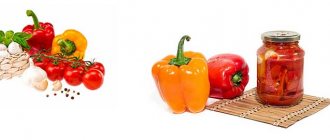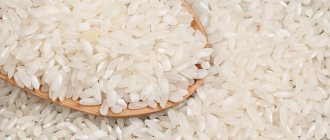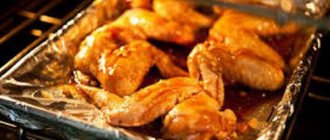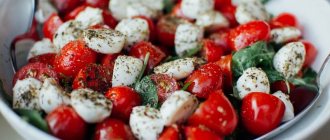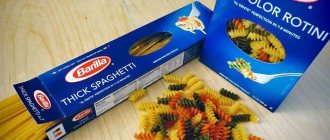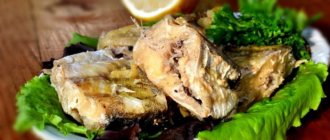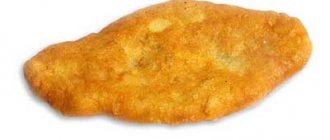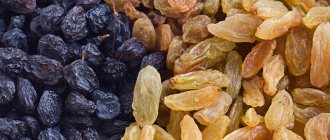Share:
Parboiled rice stands out on store shelves with an unusual creamy, yellowish or golden hue. It relatively recently appeared in our kitchens among its round and long-grain counterparts. Steamed rice has confidently entered the diet of adherents of a healthy lifestyle and athletes, as a champion among types of rice in terms of beneficial properties.
Rice dishes occupy a leading position among grain crops, actively competing with wheat. They are especially popular in China and Southeast Asia. National dishes are prepared from rice: pilaf, paella, flatbreads, noodles, risotto - you can’t list it all. More than 95% of the world's population over one year old is familiar with products based on it. Recently, classic white rice has been losing its position to grains that have undergone preliminary preparation. Why this happens, and what are the differences between steamed rice and ordinary rice, you will learn from this article.
How do you get steamed rice and what is its difference from regular rice?
After ripening, the rice grain is peeled from all layers of the shell. When grinding it, the embryo is cut off. The result is a beautiful, white grain that, as a result of refining, has lost up to 85% of oils, up to 70% of cellulose and minerals, up to 65% of niacin, 50% of riboflavin and about 10% of protein. While rice acquires an attractive appearance, it loses its beneficial properties. The more polished the rice, the less biologically active substances it contains.
After repeated attempts to preserve the beneficial properties of grain during cleaning, manufacturers finally found the optimal way to pre-treat it.
Process of making parboiled rice:
- The grains in the shell are winnowed.
- Unrefined rice grains are washed to remove dirt and dust.
- Film-coated grains are soaked in water. At the same time, useful elements found in the peel and germ become more accessible.
- The prepared raw materials are steamed under pressure. At the same time, vitamins, microelements and oils (up to 80%) located in the surface layers penetrate into the central part of the grain. The starch is destroyed and the grain becomes denser and glassy.
- The rice is dried.
- The grain is dehulled (cleaned) by removing the kernels and removing the bran.
- The resulting grains of rice are sorted and polished. The shell removed in this case no longer contains more than 20% of useful components. Biologically active substances remain in the grain.
After this treatment, the rice acquires a characteristic color and appears more transparent than ordinary rice. It is easy to distinguish by appearance.
But if in doubt, check the information on the cereal packaging.
Calorie content of boiled rice with additives
We rarely eat rice in its pure form, without anything at all. In most cases, rice is a side dish for fish and meat dishes, as well as one of the ingredients in salads.
- If boiled rice is cooked with meat , then such a dish will have much more calories.
- If boiled rice is cooked with vegetables , such a dish will contain fewer calories than “empty” rice.
- If fats—butter or vegetable oil—are used when cooking rice, this increases the calorie content of rice as a whole.
Composition of parboiled rice
The popularity of rice on Earth is not accidental. It is rich in microelements, vitamins, and dietary fiber. Their quantity varies significantly depending on the type, variety, processing method and area in which the plant was grown. See here for detailed ingredients of white rice.
The grain contains amino acids: arginine, choline, histidine, tryptophan, cysteine, methionine, lysine.
Nutritional value of parboiled rice:
| Substance | Quantity | Units |
| Squirrels | 6,1 – 14 | G |
| Fats | 0,4 – 2,2 | G |
| Carbohydrates | 71,8 – 79,5 | G |
| Energy value | 123 – 135 | Kcal |
Here you will see the composition of classic rice.
Preliminary preparation of cereals leads to the destruction of starch. This reduces the glycemic index (GI) from 70 to 38-40 units.
Calorie content of steamed rice per 100 grams
Calorie content of steamed rice per 100 grams is 155 kcal. 100 g of porridge contains:
- 2.75 g protein;
- 0.3 g fat;
- 33.45 g carbohydrates.
Read: Calorie content of boiled buckwheat in water without oil
According to nutritionists, steamed rice is much healthier than boiled and fried porridge. With this method of heat treatment, the maximum of useful substances is retained in the product.
Benefits of Parboiled Rice
Technological features of cereal preparation preserve biologically active substances in it as much as possible. Having a low GI, steamed rice is recommended for dietary nutrition. It is allowed for athletes and patients suffering from metabolic syndrome and diabetes.
Benefits of parboiled rice:
- normalizes metabolic processes;
- activates brain activity, regulates the intensity of processes in the nervous system;
- has a beneficial effect on the heart muscle;
- saturates the athlete with biologically active substances;
- breaks down slowly and does not lead to critical fluctuations in blood sugar levels;
- supplies the body with energy for a long time;
- has a positive effect on water-salt metabolism;
- has an enveloping effect;
- reduces acid production in the stomach;
- slows down the activity of the gastrointestinal tract.
Rice is actively used in dietetics. It is especially useful for athletes with a tendency to stomach upsets and diseases of the digestive system. It is recommended to include it in the diet of athletes during pregnancy against the background of gestational diabetes.
Rice does not contain gluten and is suitable for sports nutrition even for young athletes.
What harm can it do?
Rice cereal is balanced in composition. It has a neutral taste and has a gentle effect on the athlete’s body. But it can also have a negative impact.
In particular, the harm of parboiled rice manifests itself in constipation. They appear in athletes with slow intestinal motility. This side effect occurs when excessive consumption of rice-based dishes, a decrease in the athlete’s physical activity, for example, due to injuries, or when drinking insufficient amounts of water.
Please note that constipation becomes more frequent due to increased sweating. This happens in the summer and with increased physical activity. Usually you can get rid of them by changing your drinking diet.
Also, steamed rice is not recommended for athletes with individual intolerance. It is extremely rare. Rice is a hypoallergenic dietary product and usually does not cause side effects.
Features of steamed rice
Steamed rice has not only an improved composition, but also some culinary features:
- When heat treated, its color changes from amber to white.
- The grains are denser. They do not stick together or become soft, retaining their shape even after reheating.
- The cooking time for this type of cereal is longer (about 30 minutes).
- It is advisable to leave the finished rice in a warm place for another 15 minutes to evenly distribute moisture and add fluffiness. This makes digestion easier.
- The finished dish is almost 2 times larger compared to unprocessed rice of the same variety and quality.
Knowing these features, it is easy to prepare a tasty and healthy dish for an athlete.
In weight loss diets
Parboiled rice is often used in dietetics. It is suitable for weight loss diet. On the one hand, rice suppresses hunger well, and on the other, it has a reduced calorie content.
The maximum weight loss effect is achieved by a mono-diet. For 3 days, the diet consists of only boiled steamed rice, herbal teas and water. The diet is effective, but difficult psychologically and physically. Few people can stick to such a diet for a long time. And rice days according to this plan are good for fasting and are well tolerated.
Rice goes well with vegetables, fruits, and animal products, becoming a complete component of combined diets. There are many dietary rice dishes. The general requirement is to cook the grain until fully cooked without adding salt. Porridges, salads, puddings, noodles using rice cereal are an excellent basis for long-term weight loss courses.
For diabetics
The main problem with carbohydrate metabolism disorders is a complete change in diet on an ongoing basis. In diabetes, glucose cannot get from the patient’s blood into the cells due to the lack of insulin (type I) or due to tissue insensitivity to it (type II). Therefore, for the diet, foods are chosen that do not cause a sharp increase in blood sugar. These include parboiled rice. It contains a small amount of fast carbohydrates. Slow carbohydrates are absorbed gradually, without causing glycemic spikes.
When glucose metabolism is impaired, obesity (type II) is often observed. In this case, the diet is aimed at weight loss, which is also facilitated by rice dishes.
Calories in white rice
White rice is a popular cereal crop that is widespread in Asian countries. It contains the optimal amount of biologically active components, minerals and vitamins for the human body:
Rice cereal contains fiber and starch, which ensure the normal functioning of the digestive system. Slightly soluble carbohydrates provide an influx of energy, suppressing hunger for a long time. The calorie content of rice boiled in water or steamed does not exceed 130 kcal (100 g). It does not lose its taste within 72 hours after preparation.
Types of white rice (depending on the shape of the grains):
- Long. The grains are thin, up to 7 mm long. Cooked rice of this variety retains most of the nutritional components during heat treatment. The grains do not stick together, absorbing a minimal amount of liquid. Slightly hard, suitable for preparing salads, first and second courses.
- Average. The grains are oval, wide and small. Absorbs a lot of liquid and becomes soft fairly quickly. The grains stick together during cooking, so this variety is suitable for paella or risotto.
- Round. Small round grains, no more than 3-5 mm long, do not cook for long. Puddings, casseroles and milk porridges turn out quite sticky.
The calorie content of rice (kcal) can be affected by gluten, a protein that can cause allergic reactions. The hypoglycemic index of boiled cereal ranges from 60-75 units. The daily intake of the product is no more than 250 g. Children can be given steamed varieties of rice, which must first be boiled in water with or without salt.
The product norm per day is 100-150 g. The nutritional value of dry, thermally unprocessed cereal is quite high - about 250 kcal.
During stewing or cooking, most of the starch is washed out, so the calorie content is reduced by almost 2 times. If you add a little butter or whole milk to the water, the grains will be more nutritious. Energy value increases in direct proportion to the amount of carbohydrates and fats.
Boiled in water
Cereal cooked in water without salt has minimal nutritional value. There are no more than 115 kcal per 100 g of finished product. The nutritional value of boiled rice can increase depending on the presence of various additives in the independent dish, such as:
- salt;
- vegetable oil;
- butter;
- spices.
Table of calorie content and ratio of BJU:
| Supplements | Carbohydrates | Squirrels | Fats | The nutritional value |
| Vegetables | 24 | 2,3 | 3,13 | 130 |
| Vegetable oil | 26 | 2,1 | 2,3 | 206 |
| Butter | 24 | 2,1 | 2,3 | 191 |
Before cooking, the cereal must be washed several times until the water becomes completely clear. Pour 200-250 ml of liquid into a bowl with a thick bottom and walls. After boiling, the cereal crop is simmered over low heat. The cereal is considered ready if it has completely absorbed all the liquid. Stir the cereal periodically to prevent the grains from sticking together and burning to the bottom of the container.
On water with salt
If you add a little iodized salt to the water with cereal, the nutritional value of the side dish or independent dish will increase slightly (up to 125-128 kcal). Cereals cooked in salted water with the addition of a small amount of vegetable oil are not recommended for people on diets.
When cooked, cereal quickly absorbs liquid, so add salt immediately before cooking.
To reduce cooking time, the cereal can be pre-soaked in cold or hot water. To do this, the cereal, washed several times, is poured into a deep bowl and filled with liquid (ratio 1:3). The cereal is left for several hours; it is not necessary to cover the container with a lid.
Salt, like any other seasoning, enhances the taste of a dish.
When soaking, it is not added to the water. As the salt dissolves, it penetrates into the grains, making their taste more piquant. It is preferable to throw rice into boiling water. In this case, the salt ratio is no more than 1 tsp. for 1 l. liquids. It is not necessary to cover the pan with a lid.
During the cooking process, it is necessary to monitor the amount of liquid in the container. If it has boiled away, pour hot water over the cereal and cook for a few more minutes.
